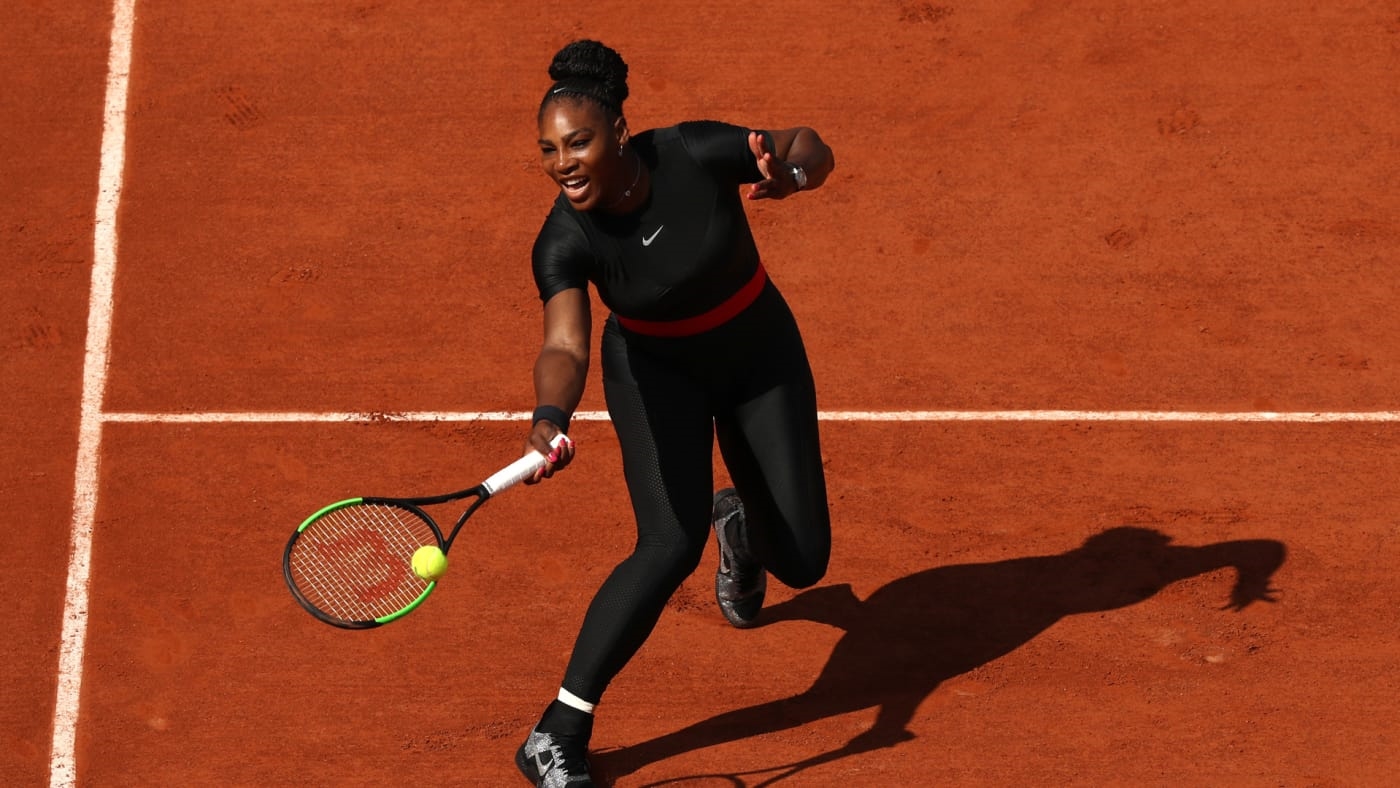Serena Williams’s return to tennis sparks a maternity leave debate
The last time tennis champion Serena Williams played a Grand Slam tournament, she won—while secretly two months pregnant. Now, eight months after giving birth to her daughter, Alexis Olympia Ohanian Jr., in September 2017, Williams is back. Earlier today, she played her first Grand Slam match post-baby, defeating opponent Kristyna Pliskova in straight sets in the first round of the French Open.
Williams held a No. 1 ranking at the time of her maternity-leave departure in April 2017. But according to the Women’s Tennis Association, which governs player rankings, she is currently ranked No. 451.
That dramatic drop in standing, which affects how she is seeded at tournaments, is prompting a broader conversation about the WTA’s maternity leave policies. Under the current system, which was implemented last year, players who take time off for pregnancy are eligible for a “special ranking,” which grants them access to eight events, including two Grand Slams. In addition, they are eligible for wildcard entries into tournaments they have previously won. But the special ranking has no effect on a player’s seeding; as a result, she is likely to be pitted against top-ranked opponents in early rounds. (A WTA player’s rank is determined by the points she earns from tournament wins, calculated on a 52-week, rolling basis. Tournament draws, or seedings, are dictated by a player’s rank.)
Williams, who enters the French Open unseeded, faced that very situation in recent matches at Indian Wells and the Miami Open. At Indian Wells, she lost to sister Venus Williams in the third round. In Miami, she lost to rising star Naomi Osaka in the first round.
“Every tournament is an opportunity for me to better understand the areas I need to improve to be my best,” Williams said in a statement following the Osaka match. She skipped the post-match press conference and instead swallowed the WTA’s $1,000 fine.
Victoria Azarenka, also a former world No. 1, gave birth to a baby boy, Leo, last year. She is a member of the WTA’s Player Council and has been leading a review of the current rules.
“I look at it from two perspectives, because the conversation started because of Serena, you know, and all respect to her, if we look at her achievements and where she’s come from, where I come from, it might be a fair choice that we do have a seeding in the tournaments after coming back,” Azarenka said in March. But, she added, “It’s a difficult question because if we do make that rule, it will have to be for everybody.”
The yawning gap between tennis elites like Williams and Azarenka and the WTA’s rank-and-file players lies at the heart of the maternity leave debate. The sport’s elite champions wield enormous clout because they attract an outsize number of fans to the events where they appear. For event organizers, there is an incentive to keep marquee names playing for as many rounds as possible. Miami Open director James Blake, for example, spoke out on Williams’s behalf—no doubt dismayed over her first-round matchup against Osaka.
“The rules should help [Williams] get the benefit of an easier draw and a better path,” Blake said, according to the BBC. “It’s not as if she left because of injury and lost her passion for the game. She had a kid, which we should all be celebrating, so when she comes back there should be a grace period where she can still be seeded.”
Star players in favor of a rule revision include Maria Sharapova, current No. 1 Simona Halep, and Williams herself.
But some lower-ranked players have spoken out in favor of the current system. “For entertainment reasons, it’s very important to have Serena Williams in the draw, but I don’t think it’s important to have her in the seeding positions at the moment,” former world No. 66 Mindy Minella said in response to questions about the current policy. “She’s so good that she will get back to the top, so the rule should stay as it is. If seeded now, she would take away the spot of another girl who had fought all year to have a seeding, so it’s a tricky situation.” Minella gave birth to a daughter, Emma, last fall.
Lower-ranked players would benefit, to some degree, from a change in the rules. But the system overall would reinforce the status quo at the expense of up-and-comers.
Tennis is not the only profession to grapple with questions of fairness around parental leave. According to Lean In, nearly half of “highly qualified” women who have a child end up leaving their jobs or taking an extended break. But they may be the lucky ones: some surveys suggest that as many as one in seven women lose their job while on maternity leave; three times as many are demoted or penalized. While such punishments are technically illegal, they are often hard to prove. In hourly wage industries like retail, requesting an accommodation as simple as more bathroom breaks can get an expecting mother fired. In short, privilege perpetuates itself through motherhood.
As for Williams, she has experience staging comebacks. In 2010, after winning her fourth Wimbledon title, she left the game for a year following a foot injury. In 2012, she returned to Wimbledon and secured her fifth All England Club title. That same year, she won two gold medals in the London Olympics, for singles and doubles, and won the U.S. Open.
Fast Company , Read Full Story
(38)



